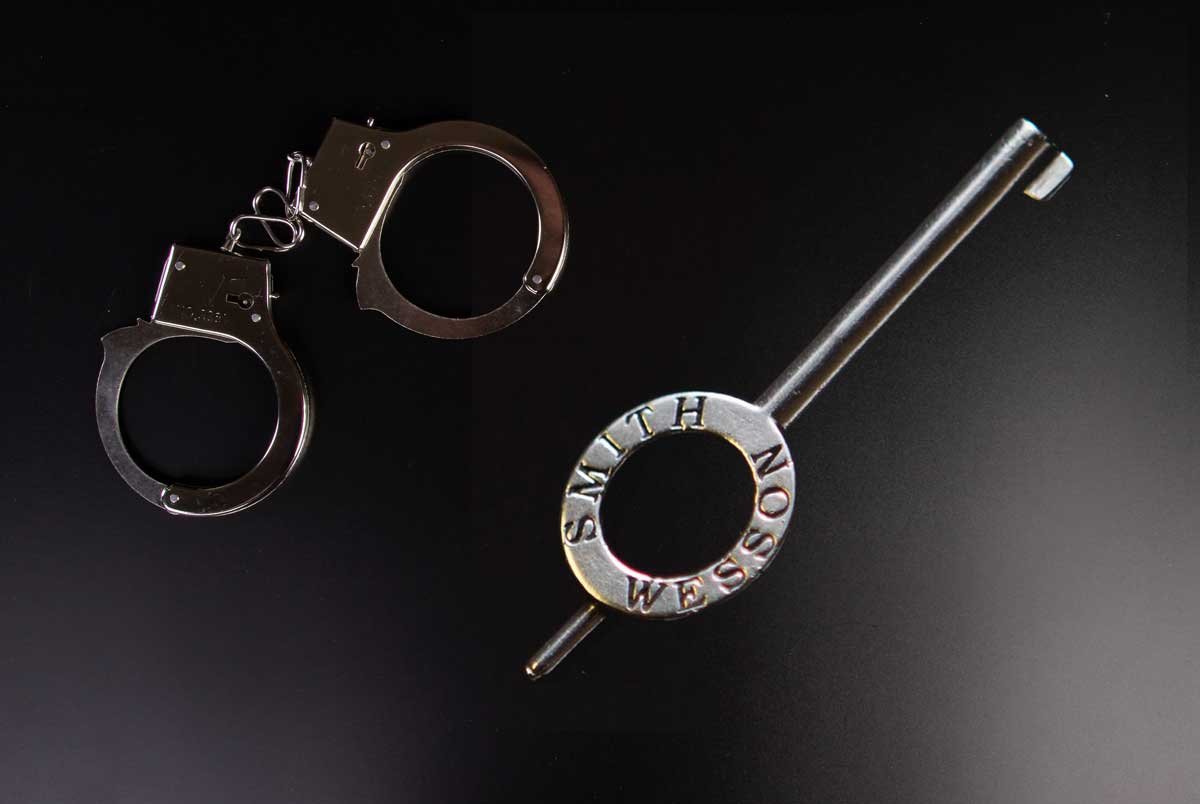How To Relieve Hip Pain from Duty Belt
A duty belt is an essential piece of equipment for law enforcement officers, security personnel, and military personnel.
However, the weight of the belt, combined with the hours spent on foot patrol, can lead to hip pain and discomfort.
This article explores various strategies and techniques to alleviate hip pain caused by wearing a duty belt.
Real-world examples and practical tips are included to help you find relief and maintain your effectiveness on the job.
Short Answer:
Hip pain from wearing a police duty belt can be relieved through a combination of adjustments, exercises, and proper support.
Adjust the belt's fit and positioning: Ensure that the belt is snug but not too tight, and sits at a comfortable height on your hips. This helps to prevent unnecessary pressure on the hip area.
Distribute the weight evenly: Arrange the items on the belt so that the weight is balanced on both sides. This prevents overloading one side of your body and can help reduce hip pain.
Add padding or suspenders for support: Adding extra padding to the belt or using suspenders can help to distribute the weight more evenly across your body and alleviate pressure on your hips.
Regularly perform hip-strengthening exercises: Strengthening the muscles around your hips can provide better support and reduce pain. Exercises like squats, lunges, and leg presses can help.
Incorporate hip stretches and mobility exercises: Stretching and mobility exercises can help relieve tightness and improve flexibility. Incorporate hip flexor stretches, pigeon pose, and foam rolling into your daily routine.
Maintain good posture: Proper posture can help distribute the weight of the duty belt more evenly and prevent hip pain. Stand tall, engage your core, and keep your shoulders back.
Consider alternative duty belt options: If your hip pain persists, explore alternative belt designs or systems that might better suit your body type or needs, such as a load-bearing vest or a drop-leg holster.
Related Questions
-
A duty belt may hurt your hips for several reasons.
The most common reasons include improper fit, uneven weight distribution, or lack of proper padding.
If the belt is too tight, too loose, or worn too low, it can cause discomfort and pressure on your hips.
Additionally, carrying heavy equipment on the belt without proper weight distribution can lead to strain and discomfort.
To alleviate hip pain, consider adjusting the fit, redistributing the weight of the equipment, and using additional padding or a suspension system for added support.
-
A duty belt should be snug, but not too tight.
It should be tight enough to securely hold your equipment in place without causing discomfort or restricting your movement.
If a duty belt is too tight, it can cause pain, bruising, or circulation problems.
On the other hand, if it is too loose, it can lead to poor weight distribution and the risk of equipment falling off.
It's important to find the right balance for your comfort and safety.
-
Yes, a police duty belt can cause back pain, especially when worn for extended periods.
The added weight of the belt and equipment can place extra strain on the lower back, leading to discomfort and pain.
Uneven weight distribution and poor fit can exacerbate this issue.
To minimize the risk of back pain, ensure that the belt is properly fitted and consider using a suspension system or additional padding for support.
Regularly redistributing the weight of the equipment and practicing good posture can also help alleviate back pain.
-
On average, a fully equipped duty belt can weigh between 15 and 25 pounds (6.8 to 11.3 kilograms).
Some of the items commonly found on a duty belt include a handgun, spare magazines, handcuffs, a baton, a Taser, a flashlight, a radio, and pepper spray.
The weight of the belt can be reduced by using lighter materials or removing unnecessary items, but officers must balance this with the need to carry essential equipment for their safety and job performance.
Understanding the Problem: Hip Pain and Duty Belts
The Causes of Hip Pain
The weight of the duty belt
Poor weight distribution
Prolonged standing or walking
Inadequate footwear
Individual physical factors
The Impact of Hip Pain
Decreased job performance
Lower quality of life
Potential for long-term injuries
Solutions for Hip Pain Relief
Adjusting Your Duty Belt
Proper weight distribution
Balancing heavy items across the belt
Using suspenders or load-bearing vests
Selecting the right size and type of belt
Ensuring a comfortable, snug fit
Choosing a padded or contoured belt
Regularly re-evaluating your belt setup
Removing unnecessary items
Adjusting the position of gear for comfort
Example: Officer Smith used to suffer from hip pain due to the weight of his duty belt. He started distributing the weight evenly across his belt and using a load-bearing vest, which significantly reduced his discomfort.
Staying Active and Maintaining Physical Health
Incorporating stretching exercises
Hip flexor stretches
Glute stretches
Hamstring stretches
Strengthening exercises
Hip abductor exercises
Core exercises
Lower back exercises
Practicing proper posture
Standing tall with a neutral spine
Engaging the core muscles
Example: Officer Johnson found relief from her hip pain by incorporating a daily stretching routine and strengthening her hip muscles. This improved her posture and reduced the strain on her hips while wearing her duty belt.
Choosing the Right Footwear
Selecting shoes with proper support
Arch support
Cushioning
Shock absorption
Opting for custom orthotics if necessary
Replacing worn-out shoes regularly
Example: Security Guard Lee had hip pain from wearing a duty belt and unsupportive footwear. After investing in a pair of high-quality shoes with proper support, his hip pain significantly decreased.
Taking Regular Breaks and Varying Activities
Sitting down or changing positions periodically
Stretching or walking during breaks
Avoiding static standing or walking for long periods
Example: Officer Patel used to suffer from hip pain due to standing for long hours at her post. By incorporating sitting breaks and periodic stretching, she has managed to alleviate her discomfort.
Seeking Medical Advice and Treatment
Consulting with a healthcare professional
Identifying the specific cause of hip pain
Developing a personalized treatment plan
Considering physical therapy
Using over-the-counter pain relievers as directed
Example: Officer Gomez sought medical advice for his hip pain, and his healthcare professional recommended a combination of physical therapy and over-the-counter pain relievers. This allowed him to manage his pain effectively while continuing to wear his duty belt.
Preventing Hip Pain Before It Starts
Preparing for Long Hours on Your Feet
Developing a fitness routine
Cardiovascular exercises
Strength training
Flexibility exercises
Paying attention to nutrition
Eating a balanced diet
Staying hydrated
Consuming anti-inflammatory foods
Example: Officer Ramirez found that by maintaining a regular exercise routine, focusing on her nutrition, and staying hydrated, she was able to prevent hip pain from developing while wearing her duty belt.
Utilizing Ergonomic Equipment
Investing in a well-designed duty belt
Ergonomic features
Proper support
Durable materials
Considering additional supportive gear
Load-bearing vests
Suspenders
Lumbar support cushions
Example: Officer Thompson opted for an ergonomic duty belt with additional lumbar support, which allowed him to comfortably wear his gear without experiencing hip pain.
Staying Mindful of Your Body
Listening to your body's signals
Noticing pain or discomfort early
Adjusting your gear or habits accordingly
Regularly assessing your duty belt setup
Evaluating the need for each item
Ensuring optimal weight distribution
Scheduling regular check-ups with a healthcare professional
Catching potential issues early
Developing a preventative care plan
Example: Officer Nguyen stayed mindful of her body and made a habit of assessing her duty belt setup regularly. By doing so, she was able to prevent hip pain from developing and address any discomfort early on.
Conclusion
Hip pain from wearing a duty belt is a common issue among law enforcement officers, security personnel, and military personnel.
However, by implementing the strategies discussed in this article, you can alleviate and prevent hip pain, improving your comfort and job performance.
By adjusting your duty belt, staying active, choosing the right footwear, taking breaks, and seeking medical advice when needed, you can unlock the secret to pain-free patrols.
Remember, every individual is different, and what works for one person may not work for another. The key is to find the right combination of techniques and equipment that best suits your needs.
By being proactive and addressing hip pain early, you can continue to serve and protect your community with comfort and confidence.












Inside the Investigation: A Deeper Dive into Police Detective Benefits